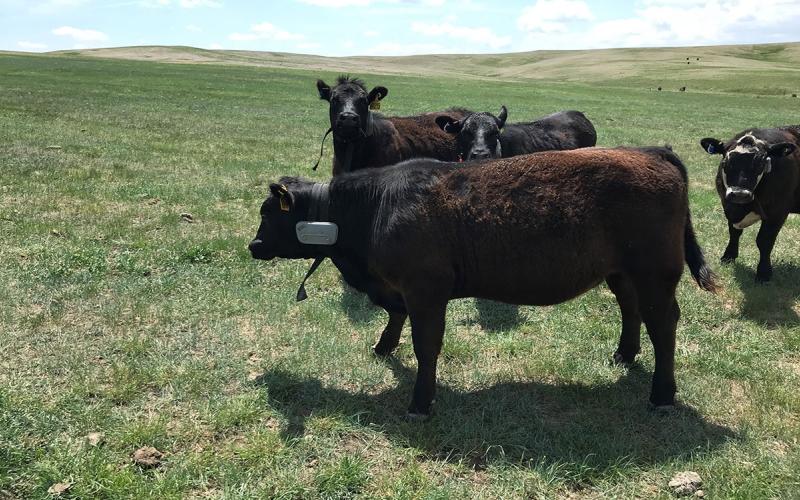Originally written by Olivia Amundson, former SDSU Extension Cow/Calf Field Specialist.
I was approached by a cattle producer about efficiently removing net wrap. As many of you know, net wrap has its advantages as well as disadvantages, but is largely used as a hay binding material. Current research being conducted at the Cottonwood Field Station is looking at the impact of net wrap accumulation in the rumen when hay is ground with net wrap. The large question being answered is if issues regarding net wrap accumulating in the rumen can be prevented. Furthermore, does this accumulation of net wrap affect cow longevity and can our management practices make a difference. For more information on accumulation of net wrap in the rumen see the article, Summary of Forage Binding Survey and Current Net Wrap Research.
Unwrapping a bale wrapped in net wrap can be time consuming and sometimes frustrating. We understand that labor is a valuable resource. One of the biggest concerns with removing net wrap is that bales can easily fall apart when unwrapped. One producer offers some advice through his own trial and errors regarding net wrap removal. However, before we start breaking down how to efficiently unwrap that bale, let’s discuss some of those advantages and disadvantages of using net wrap.
Advantages
Not only do net wrapped bales have better visual appeal than twine wrapped bales, productivity and efficiency of net wrap supersedes sisal twine. Dry matter loss is less for net wrap when compared with twine and twine generally has a shorter storage period. When considering transportation, net wrap allows for better bale integrity during handling and transportation. Net wrap is also at an advantage for its water-repelling properties which allows better preservation in wet conditions.
Disadvantages
Taking net wrap off can be timely and frustrating. Storing net wrap bales under a roof allows for snow and ice to stay off of bales, yet, if not stored under a roof, snow and ice become a burden to removing net wrap. Furthermore, bales stored outside are subject to water pooling at the bottom of a net wrap bale. Net wrap accumulation in the rumen can cause “plastic disease” and affect cattle health and performance.
Removing Net Wrap
How net wrap is removed depends largely on how the hay is being fed. If a bale is being fed in a bale feeder some simple tips can assist you in removing the net wrap quickly and efficiently. If using bale forks to lift the bale into the feeder, the forks should enter the lower half of the bale at approximately a twenty-degree angle, this allows the bale to be lifted above the feeder without slipping off the forks. Prior to lifting the bale, find the end of the net wrap and securely tuck it under the net wrap at the top of the bale. When preparing to place the bale in the feeder, tilt the forks to a thirty degree angle and find the starting point of your net wrap (what was previously tucked in the top portion). Once found, start unraveling the net wrap. To keep the net wrap from becoming a pile on the ground, wrap it or bundle it as you move your way around the bale until all the net wrap has been removed from the bale.
If taking a bale out to pasture or feeding off the back of a hydra bed, a way to ensure the bale does not come apart during the trip to the field is to wrap the net wrap around the bale. This can be accomplished by removing the top one third of the bale and using it as a string (Figure 1.1). Once the top one third is 3/4th of the way removed, take the unraveled one third and wrap it around the body of the bale. Take one end of the string and tie an overhand loop knot (Figure 1.2). Take the other end and pull it through the loop and pull tightly, tie and secure (Figure 1.3). Once the string is secured tightly around the entire bale, remove the rest of the net wrap (Figure 1.4). This allows the bale to remain intact while transferring it to another location.

Other suggestions to making net wrap removal easy include facing your bales in a direction where the sun will hit it throughout the day, especially when they are unable to be under a roof. This allows for any snow accumulation to melt off the bales and make removal easier.
If you have tips and tricks to removing net wrap efficiently, I would appreciate hearing them. Feel free to contact Olivia Amundson or Adele Harty.


